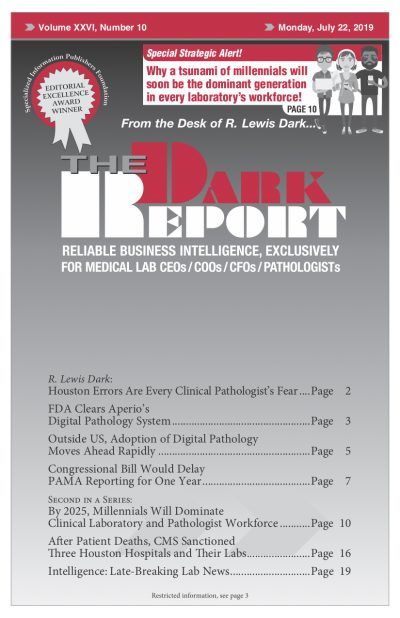CEO SUMMARY: In May, the FDA announced clearance for Leica Biosystems to market its Aperio AT2 DX System for clinical diagnosis in the United States. The Aperio AT2 DX System is intended for in vitro diagnostic use as an aid to pathologists reviewing and interpreting digital images of surgical pathology slides prepared from formalin-fixed paraffin …
FDA Clears Aperio’s Digital Pathology System Read More »
To access this post, you must purchase The Dark Report.


